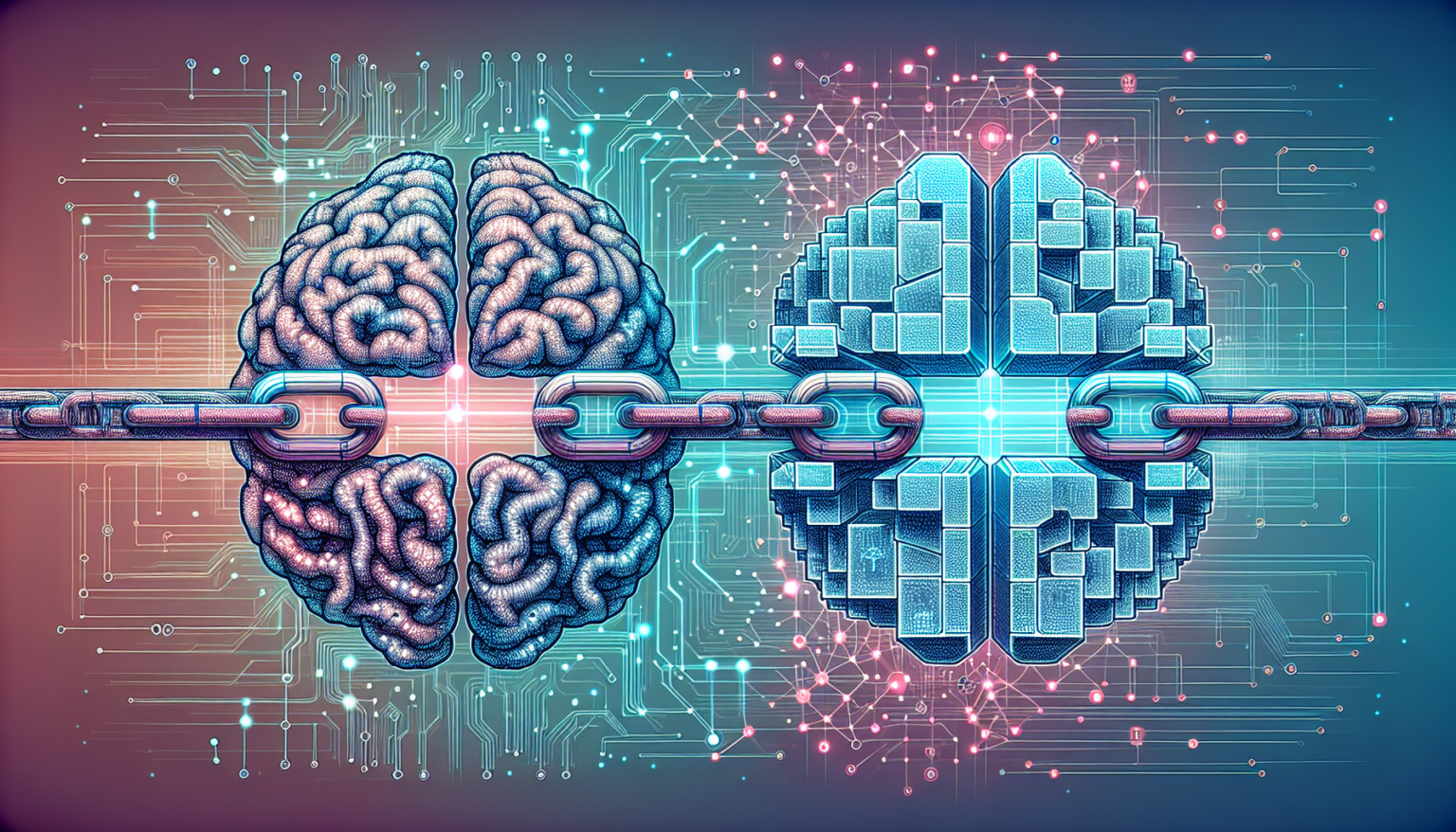AI and Blockchain Collaboration: A New Era of Digital Innovation
H2 The Intersection of AI and Blockchain
H3 What is Artificial Intelligence?
Artificial Intelligence (AI) refers to the simulation of human intelligence processes by machines, particularly computer systems. This includes learning, reasoning, and self-correction. As AI continues to evolve, it has become a crucial component in various sectors, enabling organizations to automate processes, analyze vast amounts of data, and drive data-driven decision-making.
H3 Understanding Blockchain Technology
Blockchain is a decentralized ledger technology that records transactions across multiple computers. This technology ensures that records cannot be altered retroactively without the alteration of all subsequent blocks and the consensus of the network. While originally designed for cryptocurrencies like Bitcoin, blockchain’s potential extends far beyond financial transactions. Its immutable, transparent nature makes it an attractive option for industries that require security and trust.
H2 The Synergy Between AI and Blockchain
H3 Enhanced Data Security and Trust
One of the primary benefits of integrating AI with blockchain is enhancing data security and trust. Blockchain can store data securely in a way that it cannot be tampered with. When combined with AI, this allows for advanced data analytics without compromising data integrity. For instance, banks can leverage this collaboration to analyze transaction data for fraud detection while ensuring that the underlying transaction records remain secure and unaltered.
H3 Improved Decision-Making
The amalgamation of AI and blockchain presents a significant opportunity for improved decision-making. AI algorithms can analyze and interpret data stored on blockchain networks in real-time, allowing organizations to gain insights faster than ever before. Instead of relying on traditional centralized data systems that may be prone to errors, anomalies, or delays, AI can efficiently harness and process the immutable data from the blockchain, allowing for informed strategies and actions to be deployed quickly.
H2 Practical Applications of AI and Blockchain
H3 Supply Chain Management
In supply chain management, transparency and traceability are critical. By implementing blockchain technology, all stakeholders can access an unalterable record of transactions. AI can then analyze this data to optimize routes, predict demand fluctuations, and improve inventory management. Together, they can enhance efficiency and reduce costs by identifying bottlenecks and inefficiencies in real-time.
H4 Case Study: Provenance
Provenance is a platform that uses blockchain to provide transparency in the supply chain. By tracking the journey of products from production to sale, consumers can verify the authenticity and ethical sourcing of items. AI algorithms can then analyze purchasing patterns and market trends to help businesses make production and stocking decisions, ultimately benefiting both companies and consumers.
H3 Financial Services
The financial services industry is ripe for transformation through the integration of AI and blockchain. AI can help in risk assessment, compliance monitoring, and customer service, whereas blockchain can facilitate secure transactions and documentation. Together, they offer stronger fraud detection and improved client support.
H4 Case Study: VeChain
VeChain aims to revolutionize various industries, including finance, by creating a decentralized platform for supply chain logistics. By utilizing their blockchain to verify data, financial institutions can be more confident in the authenticity of the information they receive. AI applications then use this verified data to assess risk and tailor financial products accordingly.
H2 Challenges of AI and Blockchain Integration
H3 Scalability Issues
One of the major challenges of integrating AI and blockchain is scalability. While blockchain is efficient for secure transactions, it may struggle to handle large volumes of data required by AI for analysis. This challenge demands innovative solutions, such as Layer 2 scaling approaches, which can speed up transaction processing times while ensuring that the integrity of the blockchain remains intact.
H3 Data Privacy Concerns
Combining AI and blockchain can raise significant data privacy concerns. Data stored on blockchain is accessible to all participants in the network, which, while beneficial for transparency, can conflict with regulations like GDPR that prioritize individual privacy. Finding a balance between transparency and confidentiality is essential to encourage widespread adoption of this collaboration.
H2 Future Prospects of AI and Blockchain Collaboration
H3 Democratization of Data Access
As the collaboration between AI and blockchain matures, we can expect a democratization of data access. Organizations would be more willing to share data securely, knowing that blockchain technology can safeguard its integrity. AI can analyze shared data, leading to innovative solutions that might not have been achievable in isolated environments.
H4 Decentralized AI
The notion of decentralized artificial intelligence (DAI) could arise from this collaboration. By using blockchain to manage AI models, organizations can train and share AI algorithms seamlessly, enhancing the power of machine learning while ensuring transparency and facilitating collaboration among different entities. This would enable collective advancements in AI capabilities without the typical centralization that current models often face.
H3 Revolutionizing Industries
The partnership of AI and blockchain promises not only to enhance existing systems but also to revolutionize entire industries. From healthcare, where patient data security and accurate diagnostics can be improved, to real estate, where transactions can become faster and more transparent, the potential applications are both vast and varied.
H4 Long-term Sustainability
As businesses globally embrace sustainability, the synergy between AI and blockchain could play a key role. Blockchain can trace the environmental impact of products, while AI can analyze and optimize resource use. This integration allows businesses to take responsible actions based on real-time data, improving their sustainability efforts and positioning them favorably in a market that increasingly values corporate responsibility.
H2 Conclusion: A New Era of Digital Innovation
The collaboration between AI and blockchain is shaping up to be a significant driver of digital innovation across various sectors. By harnessing the strengths of both technologies, we can usher in a new era characterized by efficiency, transparency, and trust. Continuous advancements in this field will not only enhance existing processes and systems but also create entirely new paradigms for how we conduct business and interact in the digital age. As challenges are overcome and solutions are developed, the potential of this collaboration seems limitless.








